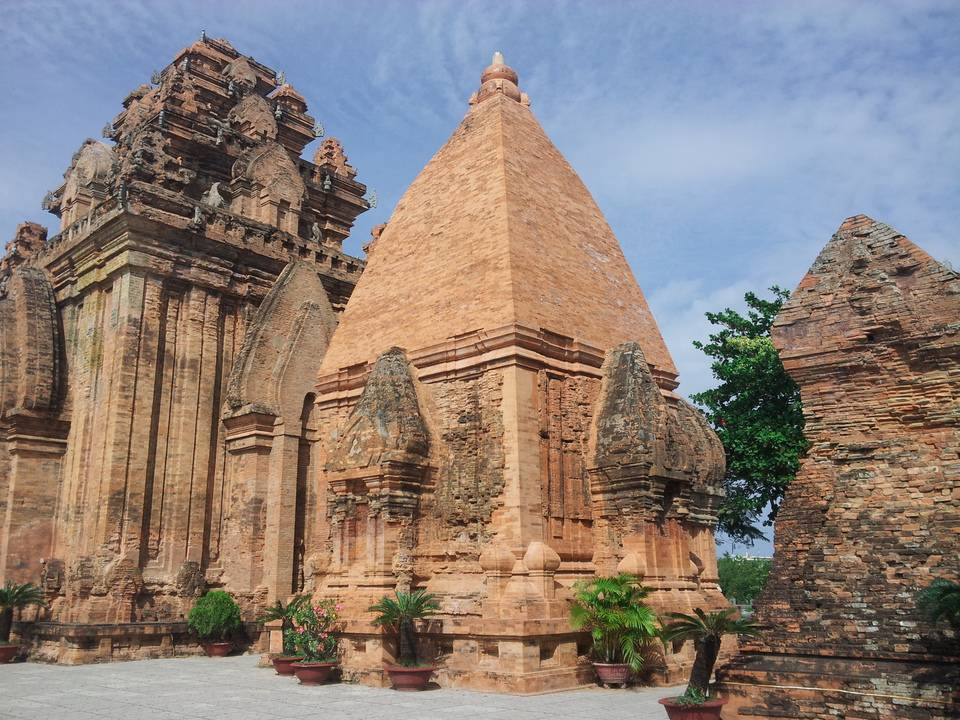The Po Nagar Cham Towers are a remarkable complex of temples located in Nha Trang, Vietnam. They stand as a testament to the architectural ingenuity and spiritual significance of the Cham civilization. These towers were built between the 7th and 12th centuries to honor the goddess Po Nagar, also known as Lady Thien Y A Na, revered by the Cham people. The site has been a place of pilgrimage for centuries and remains an active religious site for both Cham and Vietnamese Buddhists.
Get your dose of History via Email
Historical Background of Po Nagar Cham Towers
The Po Nagar Cham Towers were built by the Cham people, who ruled Central and Southern Vietnam from the 7th to the 15th century. The Cham civilization was heavily influenced by Hinduism, and the towers were dedicated to Hindu deities. The site was discovered by French colonists in the 19th century, but it has been a place of worship for much longer. The towers were constructed using red bricks and sandstone, and they have withstood the test of time, surviving both natural and human-inflicted damage.
Historians believe that the towers were built on the site of a former wooden temple that was burned down during a raid by the Javanese in 774. The remaining structures, however, were built between the 7th and 12th centuries. The Cham people were skilled sailors and traders, which allowed them to accumulate wealth and invest in monumental architecture like the Po Nagar Towers. The towers were not only religious structures but also served as a symbol of Cham political and cultural power.
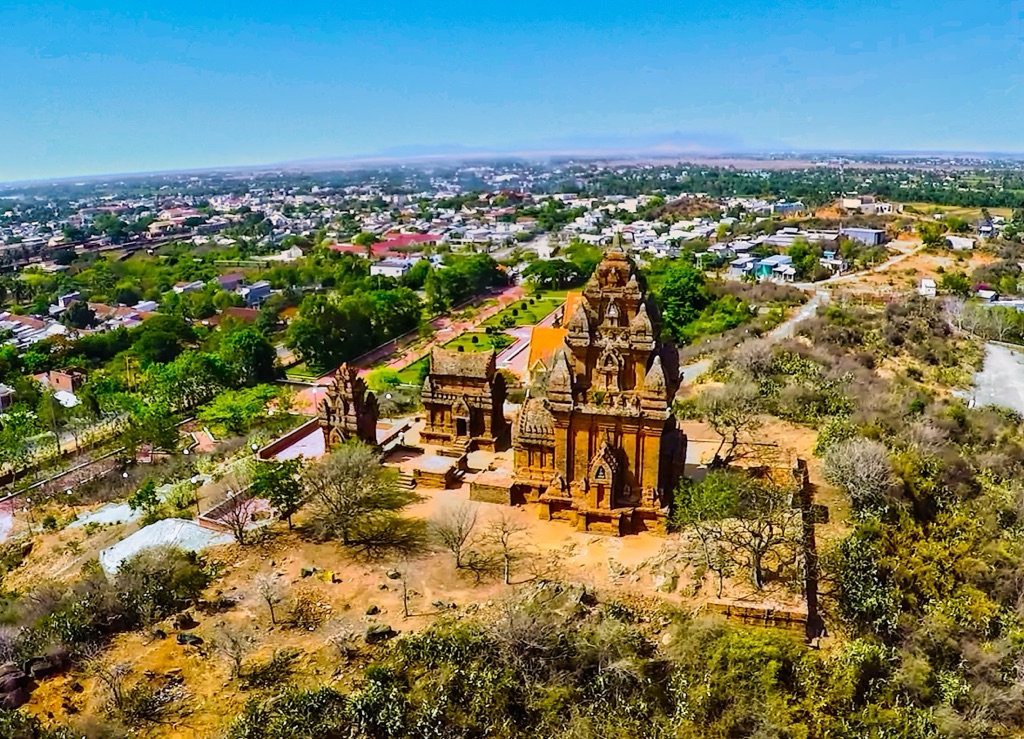
Over the centuries, the Po Nagar Cham Towers have seen many changes. They have been renovated and reconstructed multiple times. During the 17th century, the area was inhabited by the Vietnamese, who continued to use the site for religious purposes. The towers have also been the scene of significant historical events, including conflicts between the Cham and the Khmer, as well as between the Cham and the Vietnamese.
The French colonial administration recognized the historical value of the Po Nagar Cham Towers in the late 19th century. They undertook restoration efforts and conducted archaeological studies to understand the site better. These efforts have continued into the modern era, with Vietnamese authorities and international organizations working to preserve the site.
Today, the Po Nagar Cham Towers are not only a historical site but also a living place of worship. They attract thousands of visitors and pilgrims every year, who come to admire the ancient architecture and participate in religious ceremonies. The towers have become an integral part of the cultural heritage of Vietnam and are a symbol of the enduring legacy of the Cham civilization.
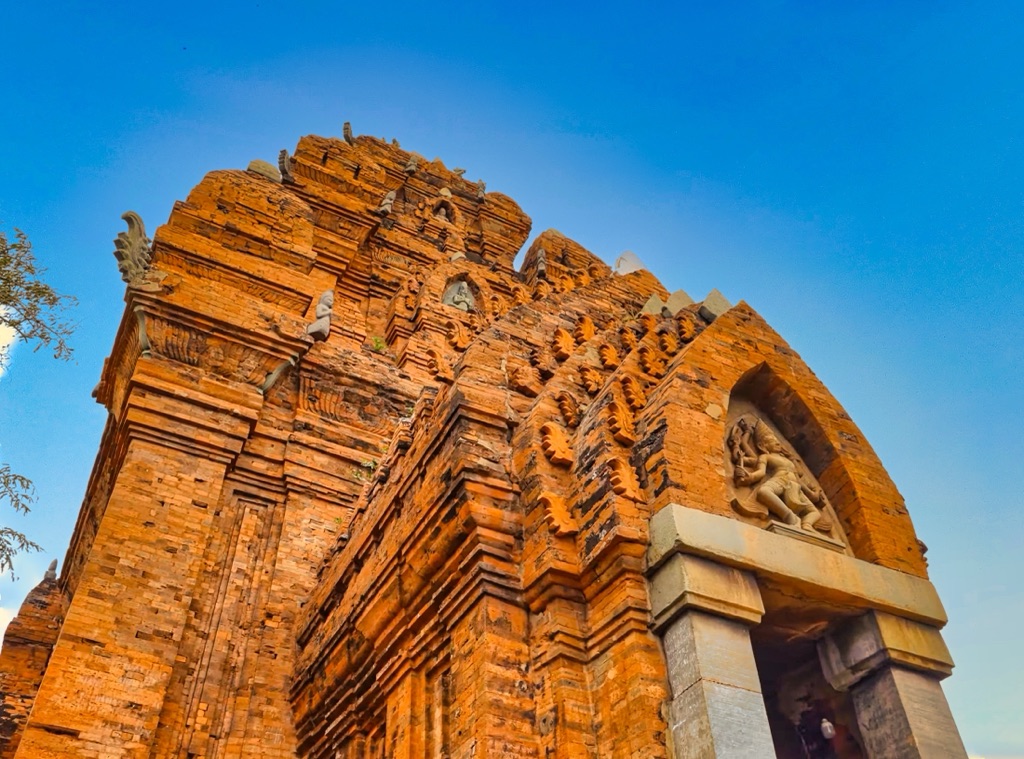
About Po Nagar Cham Towers
The Po Nagar Cham Towers are a complex of temples situated on a hill overlooking the Cai River. The site originally consisted of ten towers, but only four remain today. The largest tower, standing at 23 meters, was dedicated to Po Nagar. The towers feature stunning carvings and reliefs depicting scenes from Hindu mythology, as well as inscriptions in Sanskrit and Cham languages.
The construction of the towers is a marvel of engineering. The Cham builders used a technique that involved setting bricks closely together without the use of mortar. This method has puzzled modern engineers, as the structures have remained stable for centuries. The reddish-brown bricks were fired to a high temperature, which has contributed to their durability.
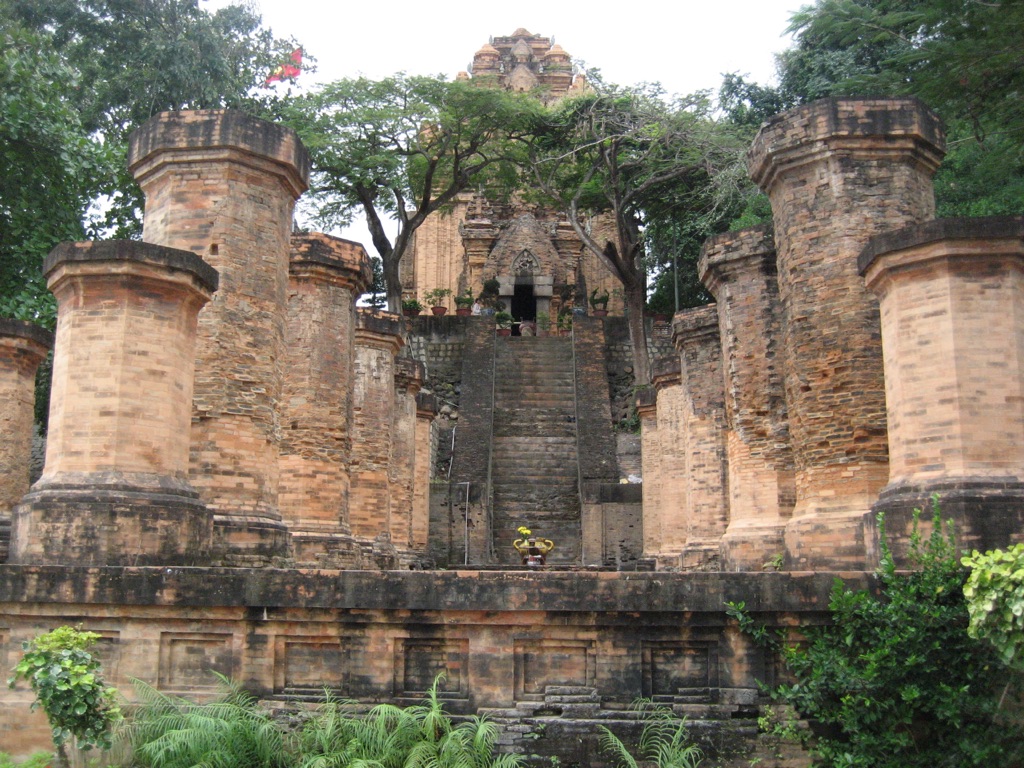
Architecturally, the towers are a fusion of indigenous Cham elements and external influences, particularly from India. The temples’ pyramidal roofs, carved false doors, and intricate lintels are characteristic of Cham design. The main tower, dedicated to the goddess Po Nagar, is the most impressive, with a statue of the deity inside the sanctum.
The materials used in the construction of the towers include sandstone for the door frames and decorative elements, while the main structures are made of brick. The sandstone was likely sourced from quarries in the Khanh Hoa province, which is known for its quality stone. The bricks, on the other hand, were made from clay found in the surrounding areas.
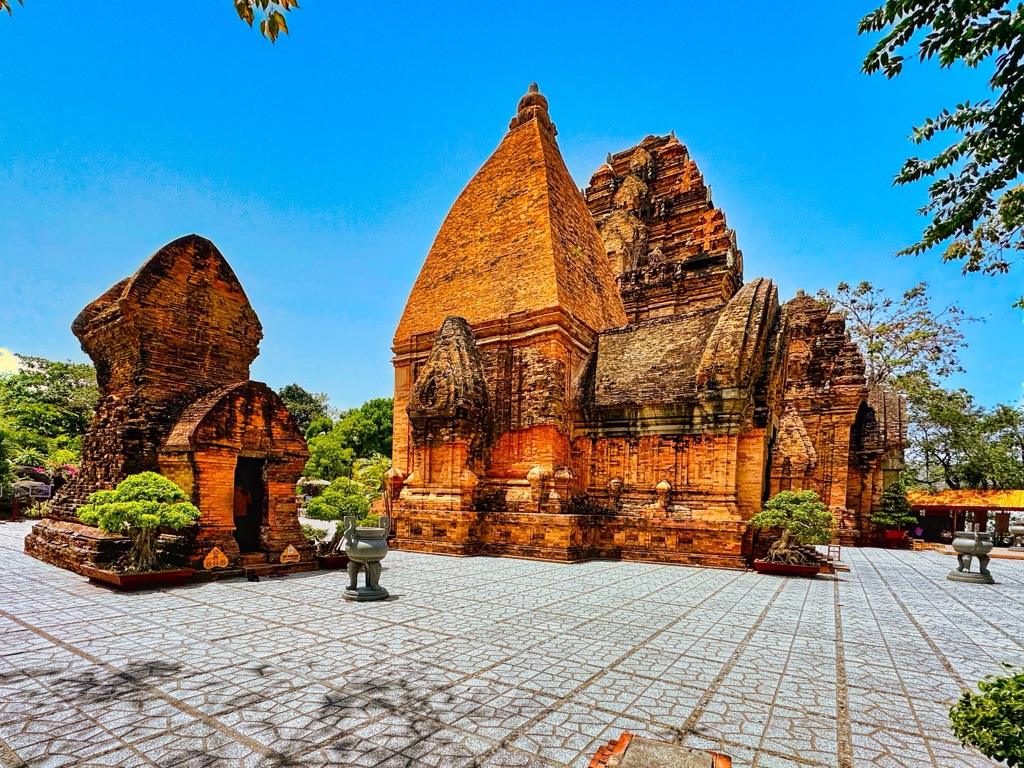
The Po Nagar Cham Towers are not only significant for their architectural features but also for their spiritual atmosphere. The site is still used for worship and during certain times of the year, it hosts vibrant festivals. The annual Thap Ba festival, which takes place in March or April, is a particularly important event that draws crowds from all over the region.
Theories and Interpretations
Several theories exist about the purpose and significance of the Po Nagar Cham Towers. The most widely accepted view is that they served as a religious complex dedicated to Hindu deities, with the main tower honoring the goddess Po Nagar. However, some scholars suggest that the towers may have had an astronomical purpose, aligning with certain celestial events.
The mystery of the construction technique used by the Cham builders has led to various interpretations. Some researchers propose that the bricks were bonded using a sticky substance made from tree resin, while others believe the bricks may have been laid while still soft and then fired in place. However, no conclusive evidence has been found to support these theories.
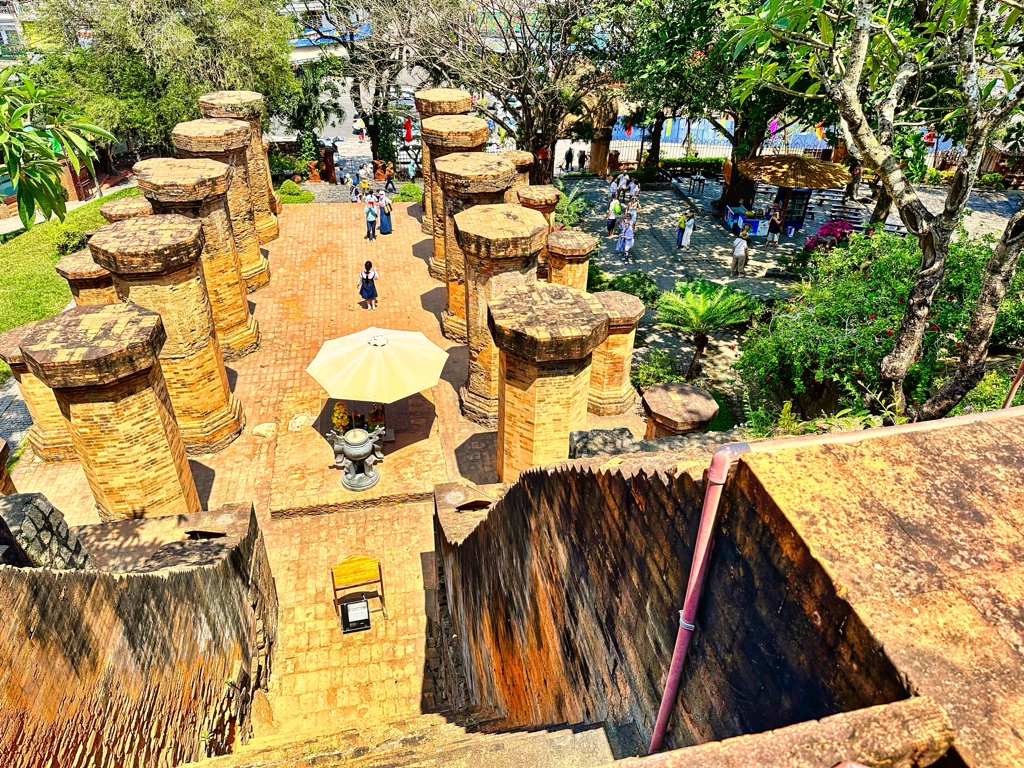
The inscriptions and iconography found on the towers have provided valuable insights into the religious and cultural practices of the Cham people. The Sanskrit and Cham inscriptions have been matched to historical records, helping historians to date the structures and understand their significance. The carvings depict various Hindu gods and goddesses, as well as scenes of everyday life, indicating the blend of the sacred and the secular in Cham society.
Dating of the Po Nagar Cham Towers has been carried out using architectural styles and inscriptions. The towers are believed to have been built between the 7th and 12th centuries, with the oldest parts dating back to around 781 AD. This timeline corresponds with the period of Cham dominance in the region.
Despite the extensive research, many aspects of the Po Nagar Cham Towers remain shrouded in mystery. The exact methods of construction and the full extent of the site’s religious significance are still subjects of study and debate among historians and archaeologists.
At a glance
Country: Vietnam
Civilization: Cham
Age: 7th to 12th century AD
Conclusion and Sources
Reputable sources used in the creation of this article include:
- Wikipedia: https://en.wikipedia.org/wiki/Po_Nagar

